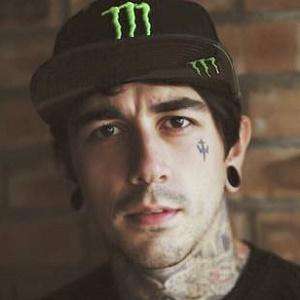
Harry Main: The Maverick, The Mogul, The Enduring Icon of BMX
In the often-unpredictable, gravity-defying world of action sports, where careers can soar as quickly as a triple tailwhip and fade with the snap of a chain, few individuals have carved a path as distinctive and impactful as Harry Main. From the gritty streets of Liverpool to the global stage, Main emerged not just as a prodigious BMX talent, but as a polarizing figure, an astute entrepreneur, and ultimately, an enduring icon whose influence continues to shape the sport. His journey is a compelling narrative of raw skill, bold decisions, and the relentless pursuit of an authentic vision, even when it meant defying expectations.
Born in Liverpool, England, in 1990, Harry Main’s introduction to BMX was less a choice and more a natural calling. The bike became an extension of his will, a vehicle for expression that transcended the everyday. By his early teens, it was clear he possessed a rare gift. He wasn’t just riding; he was redefining the possible. His style was a captivating blend of explosive power, technical precision, and an almost reckless abandon that thrilled audiences and left competitors in awe. He had an innate ability to link seemingly impossible tricks, turning skateparks into his personal canvas.
The late 2000s marked Harry Main’s meteoric rise. With the advent of YouTube and the burgeoning digital age, riders could instantly share their exploits with a global audience, and Main was perfectly positioned to capitalize. His early video edits, showcasing a dizzying array of tricks – including his signature 720 downwhip and the then-unfathomable triple downside whip – went viral, cementing his status as a wunderkind. He was quickly snapped up by major sponsors, most notably Nike 6.0 and Hyper Bikes, brands that saw in him not just a rider, but a marketable phenomenon.

At the peak of his contest career, Harry Main was virtually unstoppable. He graced magazine covers, dominated podiums at prestigious events like the NASS Festival and multiple international competitions, and was widely considered the face of a new generation of freestyle BMX. He possessed a charismatic swagger, a confident demeanor that translated into a captivating presence both on and off the bike. For many young riders, Harry Main wasn’t just an inspiration; he was the inspiration, embodying the dreams of countless kids who longed to turn their passion into a profession. He was, in essence, the poster boy for modern BMX.
"When Harry first burst onto the scene, it was like a shockwave," recalls a veteran BMX photographer. "His technical ability was years ahead of its time, but it was his style, the way he attacked every ramp, that really set him apart. He made the impossible look easy, and that’s a rare quality."
However, as is often the case with pioneers, Main’s journey was not without its controversial turns. Around the early 2010s, a noticeable shift began to occur. The contest circuit, with its rigid formats and often political judging, started to lose its appeal for Main. He gravitated more towards street riding and producing video content, a realm where creative freedom trumped competitive scores. This pivot, while understandable for an artist seeking new avenues of expression, was met with a degree of confusion and even criticism from some corners of the BMX world.
The truly seismic shift, however, came with his departure from major sponsors like Nike and Hyper. In an industry heavily reliant on corporate backing, leaving such high-profile deals was almost unheard of for a rider of his caliber. What followed was perhaps his most audacious move: the launch of his own bike brand, Mafia Bikes.
This decision ignited a firestorm of debate. Critics accused him of "selling out" the sport, of abandoning his roots for a perceived commercial venture. Mafia Bikes, initially, was positioned as an entry-level brand, offering affordable bikes to a younger, more accessible market. This was a stark contrast to the high-end, performance-focused brands typically associated with elite riders. The quality of the initial products was scrutinized, and Main found himself at the center of a storm of online vitriol.
Yet, Main remained undeterred. He saw an opportunity, a gap in the market that the established brands were overlooking. He believed in providing an affordable entry point for the next generation, making BMX accessible to a wider demographic. "I wanted to build something for the kids who couldn’t afford a £1000 bike," Main stated in a later interview, reflecting on the early days of Mafia Bikes. "I wanted to give them a chance to experience the joy of BMX, just like I did."
This entrepreneurial spirit, born from a desire for creative control and market disruption, ultimately became a defining chapter in his career. He poured his energy into Mafia Bikes, leveraging his personal brand and massive online following to promote the products. He faced the criticism head-on, often engaging directly with his detractors, explaining his vision and defending his choices. It was a testament to his resilience and his unwavering belief in his own path.
Slowly but surely, Mafia Bikes began to gain traction. What started as a contentious venture evolved into a legitimate player in the BMX market. The brand expanded its product line, improved quality, and built a loyal customer base, particularly among younger riders. Harry Main had not only defied the critics; he had built a successful business empire from the ground up, proving that a professional rider could be both an athlete and a shrewd entrepreneur.

Today, Harry Main’s influence extends far beyond the contest park or the latest video edit. He is a multi-faceted figure: a rider who still possesses an incredible command of his bike, a successful businessman who has democratized access to BMX, and a family man who has matured into a mentor for many aspiring riders. He continues to produce compelling content, often showcasing his riding alongside the growth of his brand, maintaining a vital connection with his audience.
His legacy is complex and multifaceted. To some, he will always be the prodigy who pushed the boundaries of what was possible on a BMX bike. To others, he is the controversial figure who challenged the traditional sponsorship model and built his own empire. But to all, he is a testament to the power of individuality and conviction.
Harry Main’s journey is a powerful reminder that true innovation often comes from discomfort, from the willingness to deviate from the established path. He didn’t just ride the wave of BMX popularity; he helped shape it, then redirected it into new channels. He proved that an athlete could be more than just a sponsored talent; he could be a brand builder, a visionary, and a catalyst for change.
In a sport that prides itself on freedom and self-expression, Harry Main stands as a living embodiment of those ideals. He defied expectations, weathered criticism, and ultimately forged a path that was uniquely his own. From the thrill of a perfectly executed trick to the strategic build of a global brand, Harry Main’s story is a compelling chapter in the annals of action sports – a maverick, a mogul, and an enduring icon whose impact on BMX will be felt for generations to come. He taught us that sometimes, the biggest jumps aren’t just over ramps, but over the very notion of what’s expected.


